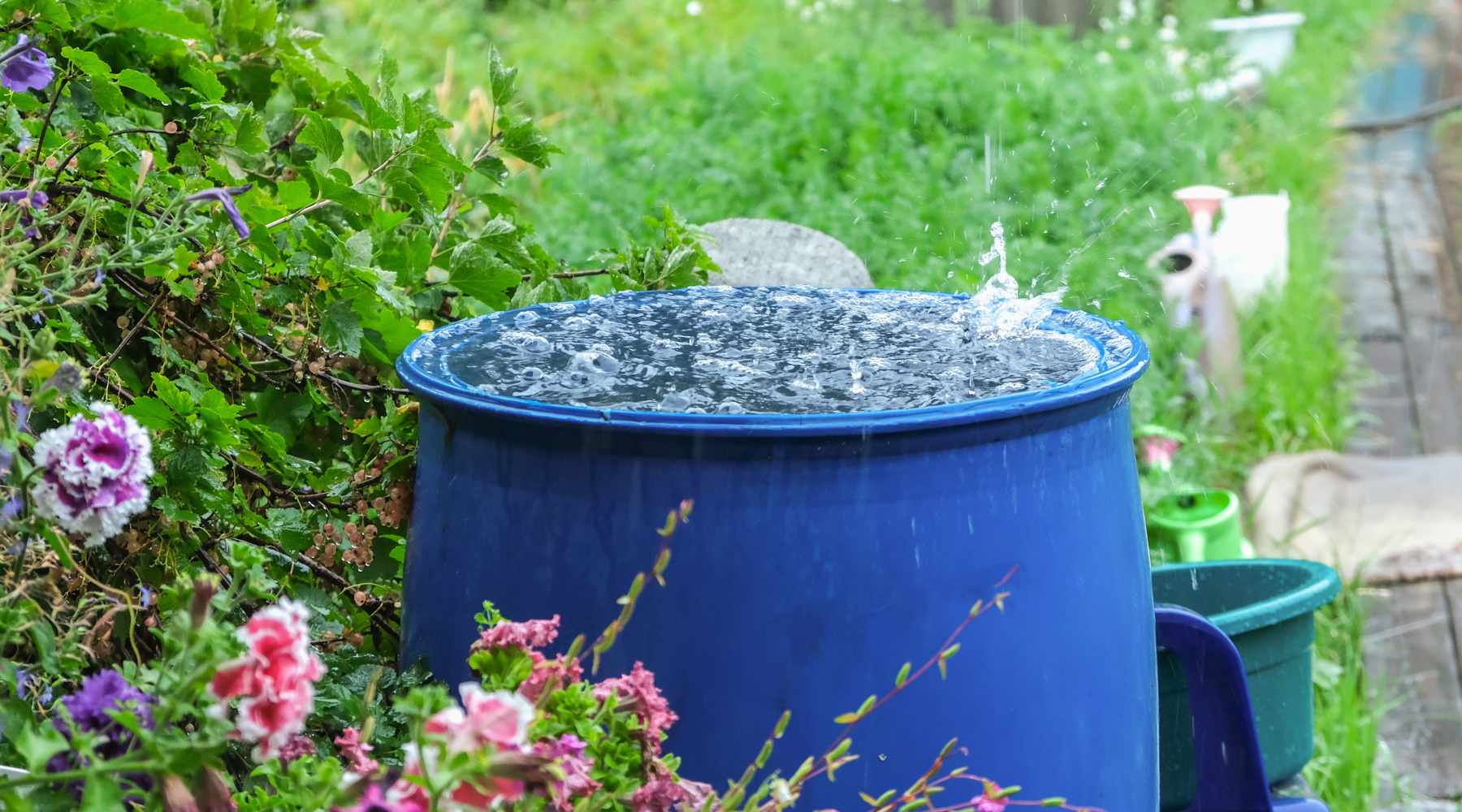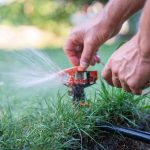Imagine transforming every drop of rain into a valuable resource for your farm. Yes, you can turn those rainy days into a blessing with a rainwater harvesting system.
Not only does this sustainable practice help you conserve water, but it also reduces your reliance on external water sources, saving you money in the long run. Plus, it’s an environmentally friendly approach that supports the health of your crops and livestock.
Are you ready to harness the power of rainwater for your farm? This guide will walk you through the simple steps to set up your own rainwater harvesting system. Whether you’re a seasoned farmer or just starting out, you’ll discover how easy it is to collect and store rainwater efficiently. Keep reading to learn how you can make the most of nature’s gift and ensure a thriving farm all year round.

Benefits Of Rainwater Harvesting
Building a rainwater harvesting system on your farm offers numerous benefits. It not only conserves water but also supports sustainable farming practices. This eco-friendly solution can enhance your farm’s productivity and resilience against droughts.
Cost Reduction
Harvesting rainwater reduces your dependence on municipal water supplies. This means lower water bills. You can save money and allocate funds to other farm needs.
Improved Water Quality
Rainwater is naturally soft and free from many pollutants found in tap water. It provides cleaner water for irrigation and livestock. This can lead to healthier crops and animals.
Environmental Sustainability
Using rainwater reduces strain on local water resources. It minimizes the environmental footprint of your farm. This sustainable practice helps protect the planet.
Drought Resilience
Storing rainwater can safeguard against dry spells. It ensures a steady water supply during droughts. Your farm can maintain its productivity even in challenging weather conditions.
Efficient Irrigation
Rainwater systems offer a reliable irrigation source. You can water your crops consistently. This promotes better growth and yields.
Enhanced Soil Health
Rainwater is gentler on soil compared to chemically-treated water. It helps maintain soil structure and fertility. Healthy soil leads to robust plant growth.
Essential Components
Building a rainwater harvesting system for your farm demands understanding key components. These parts work together to efficiently collect and store rainwater. Each component plays a crucial role in the system’s overall effectiveness.
Catchment Area
The catchment area is where rainwater is collected. Typically, it’s a roof or open field. The surface must be clean and smooth. This ensures water flows easily into the system.
Gutters And Downspouts
Gutters and downspouts direct water from the catchment area. They channel water into storage tanks. It’s vital to keep them free from debris. Clogged gutters can block water flow.
First Flush Diverter
This device removes contaminants from initial rainwater. It ensures cleaner water enters storage tanks. The first flush diverter is essential for maintaining water quality.
Storage Tanks
Storage tanks hold the collected rainwater. They vary in size and material. Choose tanks based on your farm’s needs. Ensure they’re durable and have tight-fitting lids.
Filtration System
Filtration systems clean the stored water. They remove particles and impurities. A good system ensures safe water for use. Regular maintenance keeps filters effective.
Pipes And Distribution System
Pipes distribute water from tanks to where it’s needed. A well-designed system ensures efficient water flow. Ensure pipes are leak-free and properly connected.
Step-by-step Installation
Building a rainwater harvesting system for your farm offers numerous benefits. It’s an eco-friendly way to conserve water and reduce costs. This guide provides a step-by-step approach to installing your system. Follow these steps to ensure an efficient setup.
Step 1: Site SelectionChoose a site with adequate rainfall collection potential. Ensure it’s close to your water needs. The site should have good drainage to avoid flooding.
Step 2: Design the SystemDetermine the roof area for collecting rainwater. Calculate the potential water yield based on average rainfall. Plan the storage capacity according to your farm’s water needs.
Step 3: Gutter InstallationInstall gutters along the roof edge to collect rainwater. Ensure they slope towards the downspouts. This helps water flow effectively.
Step 4: Downspout SetupAttach downspouts to the gutters. Direct the water into your storage tank. Use filters to remove debris and prevent clogging.
Step 5: Storage Tank InstallationInstall a storage tank with enough capacity. Place it on a stable base to prevent tipping. Ensure it’s sealed to avoid contamination.
Step 6: Water Distribution SystemSet up a distribution system for water usage. Use pipes or hoses to direct water where needed. Consider a pump for areas with low pressure.
Step 7: Maintenance and MonitoringRegularly clean gutters and filters to ensure efficiency. Monitor the water levels and quality. Repair any leaks promptly to avoid wastage.

Maintenance And Troubleshooting
Maintaining a rainwater harvesting system ensures long-term efficiency. Regular checks prevent issues and maximize water savings. Troubleshooting helps address problems quickly, keeping the system functional. Discover essential maintenance tips and troubleshooting strategies below.
Regular Cleaning And Inspections
Debris clogs filters and pipes, reducing water flow. Clean filters regularly to maintain efficiency. Inspect tanks for cracks or leaks. Keep gutters free from leaves and dirt. Regular inspections prevent costly repairs.
Check For Leaks
Leaks lead to water wastage and system inefficiency. Inspect joints and seals for signs of leakage. Repair any detected leaks promptly to conserve water. Regular checks ensure the system operates optimally.
Monitor Water Quality
Water quality affects crop health. Test stored water periodically for contaminants. Ensure filtration systems function correctly. Clean storage tanks to prevent algae growth. High-quality water promotes healthy crops.
Address Overflow Issues
Overflow occurs during heavy rainfall. Ensure overflow pipes are clear and functional. Direct excess water away from structures. Proper overflow management protects your farm from water damage.
Troubleshoot Pump Problems
Pumps are vital for water distribution. Listen for unusual noises indicating pump issues. Check power connections and pressure levels. Clean pump components to maintain performance. Quick troubleshooting avoids irrigation delays.
Maintain System Documentation
Keep records of maintenance activities and repairs. Documentation helps track system performance. Use logs to identify recurring issues. Detailed records assist in future troubleshooting.
Seek Professional Assistance
Complex problems require expert help. Contact professionals for repairs beyond your expertise. Professional advice ensures system efficiency and longevity. Invest in expert support for a reliable system.

Conclusion
Rainwater harvesting can transform your farm’s sustainability. It conserves water efficiently. By capturing rainwater, you reduce dependency on external sources. This system benefits both your crops and the environment. Start small, then expand as needed. Maintenance is simple but crucial for long-term success.
Remember to check tanks and pipes regularly. With this system, you save money and support nature. A win-win for your farm and the planet. Embrace this eco-friendly practice today. Make your farm more resilient and resourceful. It’s a smart choice for a sustainable future.
Happy harvesting!



